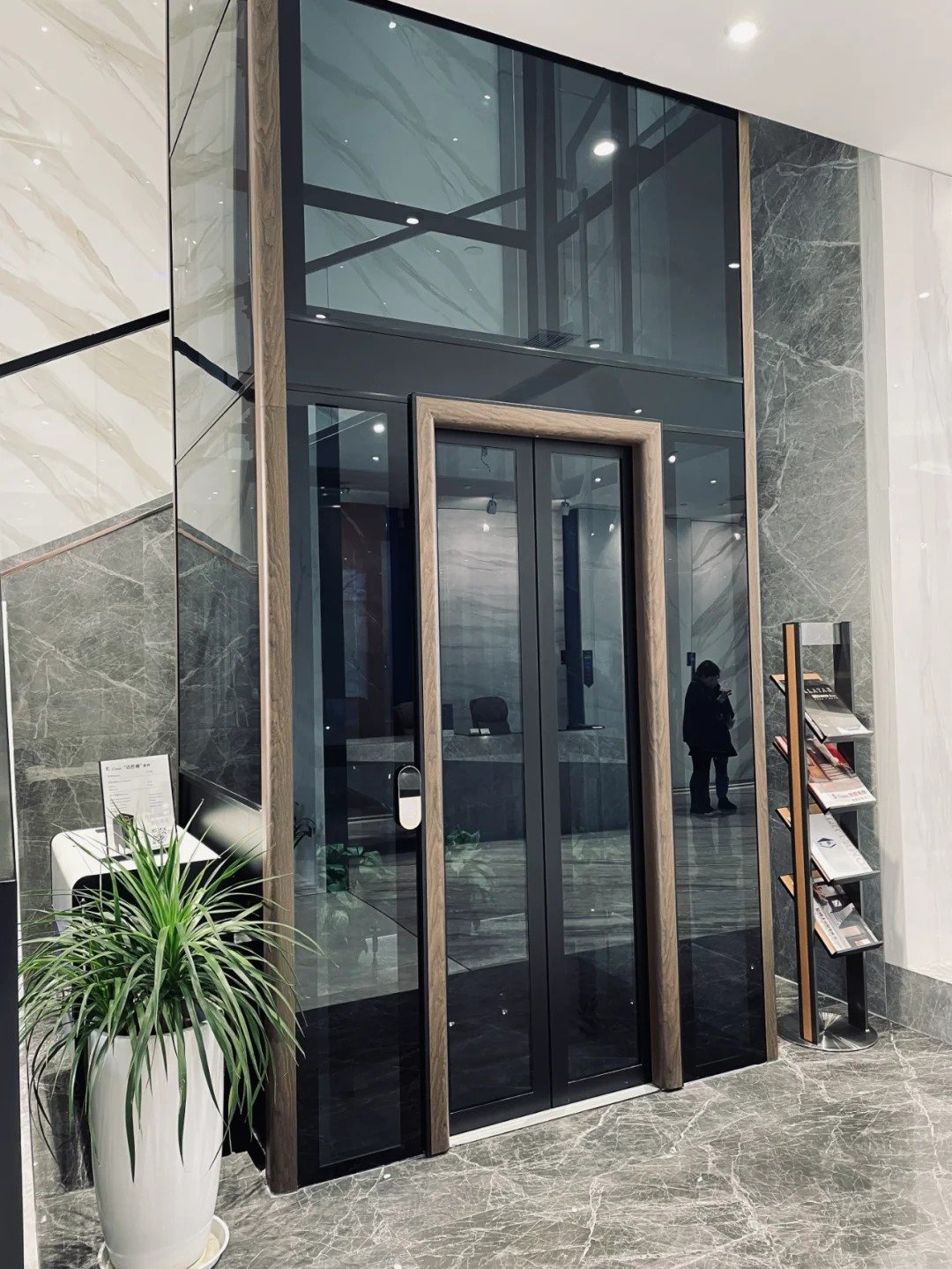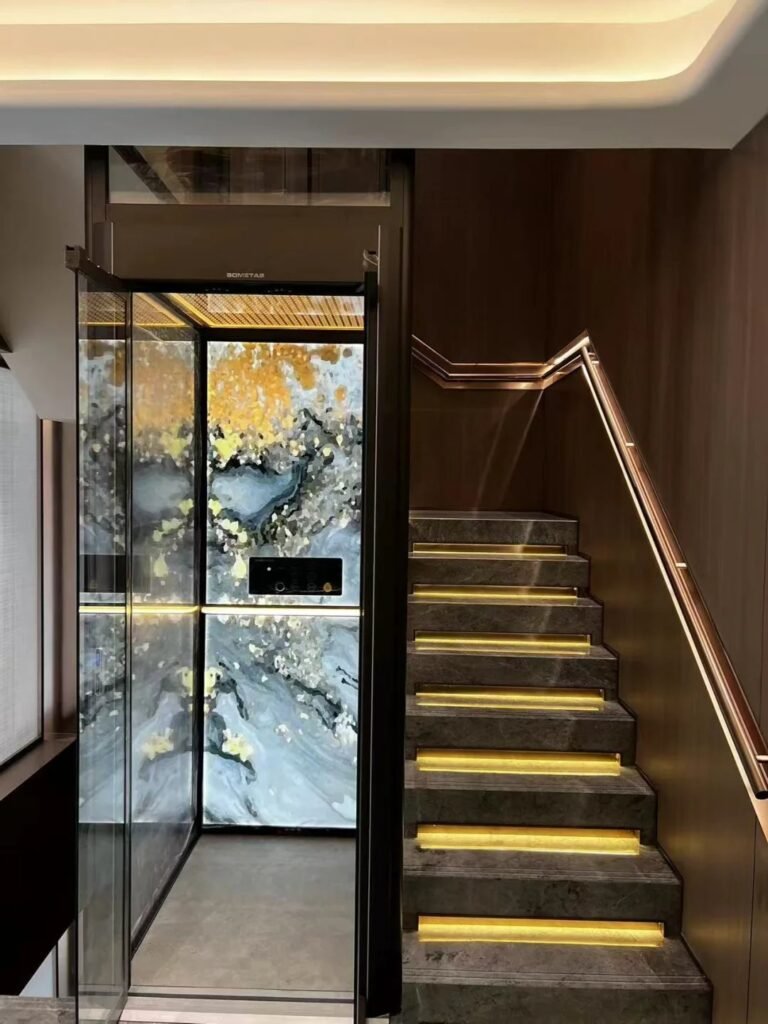Technical Features and Core Value: The Enduring Competitiveness of Hydraulic Home Elevators
The hydraulic home elevator remains a cornerstone of residential vertical transportation globally, leveraging its proven hydraulic mechanism. By using pressurized oil to drive a piston and lift the cabin, this system eliminates the need for overhead machine rooms, making it ideal for low-rise retrofits (2-6 floors). Compared to traction elevators, hydraulic models offer:
Smooth Operation: Acceleration below 0.3m/s² ensures comfort for elderly and child users;
Space Efficiency: Minimal shaft dimensions (1.2m×1.4m) suit compact homes;
Low Maintenance: Simplified mechanics reduce annual costs by 20%-30%;
Safety Redundancy: Emergency manual lowering valves and mechanical locks enable safe descent during power failures.
However, limitations like temperature sensitivity (-10°C to 40°C) and higher energy consumption (peak 7.5kW) drive innovations in smart controls and energy recovery.

Global Market Dynamics: Regional Competition and Diversification
According to Global Market Insights, hydraulic technology accounts for 35% of the $8.9 billion global home elevator market (2023), with regional variations:
North America: Dominates 45% of hydraulic demand in single-family homes, with brands like ThyssenKrupp Access offering bespoke outdoor elevators;
Europe: Thin-profile hydraulic systems (<150mm shaft depth) from Otis Italia cater to heritage building regulations;
Asia: Mitsubishi and Fujitec focus on energy-saving models, cuttingenergy consumption by 40% through IoT-enabled oil pressure monitoring;
Emerging Markets: Hydraulic home elevators thrive in regions with unstable grids due to low dependency on external power.
Challenges:
Environmental Regulations: EU REACH mandates biodegradable hydraulic oils, increasing production costs;
Competition: Screw and pneumatic elevators challenge market share, pushing hybrid electro-hydraulic R&D.

Future Innovations: Intelligence and Sustainability
To stay competitive, hydraulic home elevators are evolving through:
Energy Efficiency:
Variable-frequency pumps adjust oil flow based on load, reducing idle consumption;
Solar-assisted power systems enable off-grid operation;
Bosch Rexroth’s "Zero-Leakage" units slash oil use by 70%.
Smart Controls:
AI predicts component wear using pressure data, enabling preemptive maintenance;
Integration with smart home ecosystems allows voice-activated calls and facial recognition;
HIRO LIFT’s "Smart Oil" system auto-purifies hydraulic fluid.
Modular Design:
Prefabricated shafts cut installation time to 72 hours;
Interchangeable cabin interiors support style updates during renovations.

By 2030, smart hydraulic home elevators are projected to claim over 60% market share, driving aging-in-place retrofits worldwide.
Hydraulic home elevators, while rooted in tradition, are being redefined through intelligence and sustainability. As energy-efficient and smart technologies mature, they will continue to set benchmarks for quality in residential vertical mobility.





